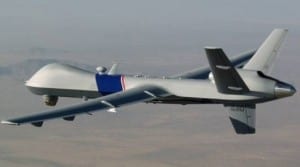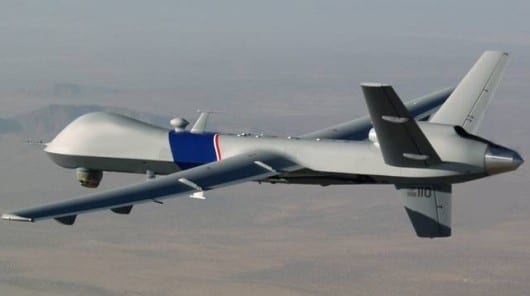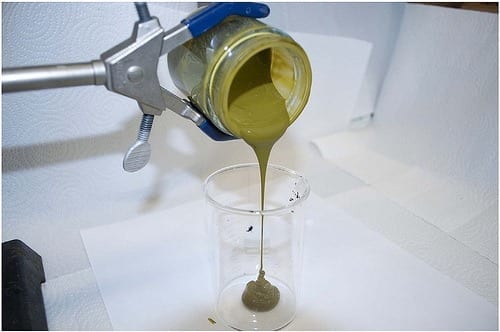
The lack of this ability is a major reason why UAVs are not permitted to fly over much of the United States
General Atomics Aeronautical System, Inc. (GA-ASI), the maker of the Predator and Reaper Unmanned Aerial Vehicles (UAVs) has successfully completed the first of several flight tests of a prototype Sense and Avoid (SAA) system that allows a UAV to operate safely around other aircraft in flight. This marked the first time the entire system – consisting of a radar, transponder, and traffic alert system – worked together as a “system of systems” to detect the various types of aircraft it might encounter in the air.
The FAA and international agencies have long insisted that UAVs have their own “sense and avoid” systems onboard that can detect other nearby aircraft and instruct either the onboard autopilot or the ground-based remote operator of the UAV how to avoid a collision. The lack of this ability is a major reason why UAVs are not permitted to fly over much of the United States, and are restricted to special airspace that has been set aside just for that use. The addition of an SAA system to a UAV paves the way for them to operate in airspace with manned air traffic.
“We are working closely with the FAA, NASA, the U.S. Department of Homeland Security [DHS], and our industry alliances to advance the safe and efficient integration of unmanned aircraft systems into domestic and international airspace,” said Frank W. Pace, president, Aircraft Systems Group, GA-ASI. “Our Sense and Avoid capability is a key part of that goal, and we continue to make ongoing progress towards this end.”
The technology demonstrated during General Atomics’ flight test does not rely on optical detection, and would be able to operate in any weather. It combines three integrated systems – the BAE Systems’ AD/DPX-7 Identification Friend-or-Foe (IFF) transponder with Automatic Dependent Surveillance – Broadcast (ADS-B) receiver; the GA-ASI-developed Due Regard Radar (DRR); and Honeywell’s TPA-100 Traffic Collision Avoidance System or TCAS.
During the test, the system had 40 pre-planned encounters with other air traffic, including some not being tracked by Air Traffic Control. The test was conducted from the Gray Butte Flight Operations Facility near Palmdale, California, a facility on the edge of the Mojave Desert and located just south of Edwards Air Force Base. The test aircraft was a Predator B model.
The three onboard systems were able to track two participating “intruder” aircraft that acted as targets for the exercise. The onboard software fused the data into a single set of tracking information that was relayed to the Conflict Prediction and Display Systems (CPDS) in front of the Predator’s ground-based pilot.
Modern aircraft have a variety of means to “see” each other in the air. It is still legal in certain areas of the US to fly with no radio at all – and even no electrical system in the aircraft. Sailplanes and gliders have no onboard power except for batteries, and ultralights can fly in uninhabited areas. The UAV SAA system would use its radar to see these targets.
The Latest on: Aircraft collision avoidance
[google_news title=”” keyword=”aircraft collision avoidance” num_posts=”10″ blurb_length=”0″ show_thumb=”left”]
via Google News
The Latest on: Aircraft collision avoidance
- Vigilant Aerospace Awarded OCAST Grant to Develop Distributed Airspace Management Systemon May 9, 2024 at 5:29 am
Vigilant Aerospace Systems, the leading developer of multi-sensor airspace management and collision avoidance software for drones and advanced air mobility, has been awarded a $500,000 grant as part ...
- The Hurdles Flying Cars Face In Getting FAA Approvalon May 7, 2024 at 4:00 pm
The concept of flying cars has been around for the longest time, but here's why their becoming a reality soon is still a far-fetched thought.
- South Korean ministry plans single-seat FA-50 investmenton May 6, 2024 at 2:47 am
South Korea's Ministry of Trade, Industry and Energy (MOTIE) has announced a plan to fund the development of the single-seat version of the Korea Aerospace ...
- Uncrewed but Confident: Forging New Rules of the Road to Avoid Accidental Escalationon May 1, 2024 at 6:09 am
On March 14, 2023, a U.S. Air Force Predator uncrewed aircraft was destroyed after it was struck by a Russian fighter jet in international airspace over ...
- MIT and Merlin To Integrate Collision Avoidance Technologyon April 29, 2024 at 5:00 pm
The partners are pursuing new uncrewed aircraft applications for the FAA-funded system The Merlin Pilot flight automation system will use airborne collision avoidance technology being developed by MIT ...
- Only One Small SUV Earned A Good Rating In New Crash Prevention Teston April 28, 2024 at 6:47 am
In an updated test that evaluated the performance of the crash avoidance systems of 10 popular, small SUVs, few models excelled.
- Merlin Partners with MIT Lincoln Laboratory (LL) to Continue Work to Dramatically Improve Aviation Safetyon April 23, 2024 at 2:00 am
This partnership will see the two organizations explore the commercial adoption of the Airborne Collision Avoidance System Xu (ACAS Xu) on unmanned aircraft systems (UAS). The partnership will focus ...
- FLARM and PilotAware Cooperate to Enhance Aircraft Safety Through Interoperable Solutionson April 18, 2024 at 11:43 am
FLARM and PilotAware, leaders in Electronic Conspicuity and Situational Awareness for both powered and non-powered aircraft in Europe ... FLARM has been a pioneer in the field of collision avoidance ...
- DARPA Achieves Major Breakthrough with AI-Controlled Aircrafton April 16, 2024 at 5:01 pm
Chinese military researchers reportedly achieved a similar feat in March 2023, with one aircraft operated ... protection and aerial/ground collision avoidance, as well as with ethical requirements ...
- Explained: The Working Principles Of TCASon May 5, 2023 at 1:34 am
or an Airborne Collision Avoidance System (ACAS). Early TCAS systems were very crude in operation. However, modern TCAS is highly reliable and integral to aircraft operations. To understand how ...
via Bing News










